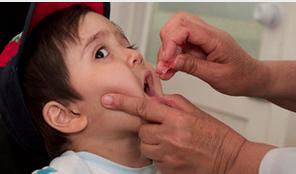 |
| Credit WHO |
#11,082
While Zika is getting all of the media's attention these days, not quite two years ago (May 2014) - after convening a meeting of their Emergency Committee - we saw the WHO Declare Polio Spread A Public Health Emergency Of International Concern (PHEIC).
Since then the IHR committee has met regularly to discuss progress in eradicating Polio and consider its status. Yesterday the WHO posted the results of their 8th consultation, where they decided to extend the PHEIC designation another 3 months.
While noting that progress has been made over the past two years in controlling wild type polio, they cited two recent reports of exportations last fall from Pakistan into Afghanistan.
And while relatively rare, we continue to see scattered reports of vaccine derived Poliovirus (cVDPV) around the world. The IHR committee reports:
In 2015, six outbreaks of circulating vaccine derived poliovirus have occurred – three cVDPV type 1 outbreaks (Ukraine, Madagascar and Lao People’s Democratic Republic) and three cVDPV type 2 outbreaks (Myanmar, Nigeria and Guinea). Six additional cases of cVDPV type 2 have been reported in Guinea since the last meeting.
These vaccine derived infections come from the use of the oral (Sabin) polio vaccine (OPV) which contains three attenuated (weakened) polio virus strains, that activates an immune response in the body, and for a few weeks causes the weakened virus to be shed in the feces.
This is considered a `good’ side effect, for in areas with poor sanitation, this vaccine-virus can spread in the community for a limited time conveying extra immunity.
But as the WHO explains:
On rare occasions, if a population is seriously under-immunized, an excreted vaccine-virus can continue to circulate for an extended period of time. The longer it is allowed to survive, the more genetic changes it undergoes. In very rare instances, the vaccine-virus can genetically change into a form that can paralyse – this is what is known as a circulating vaccine-derived poliovirus (cVDPV).
For Polio to be completely eradicated, the use of the OPV must eventually be phased out, and the final push completed using the older inactivated Salk vaccine (see Polio Eradication and Endgame Strategic Plan 2013–2018 ).
Unlike the oral vaccine which has been the workhorse of the global polio eradication initiative, the inactivated polio vaccine (IPV) must be delivered via an injection, and by a trained health care professional.
IPV is also much more expensive than OPV, but is the only path to eradication. Follow the link below to read the entire IHR statement, I've only included some highlights from the text.